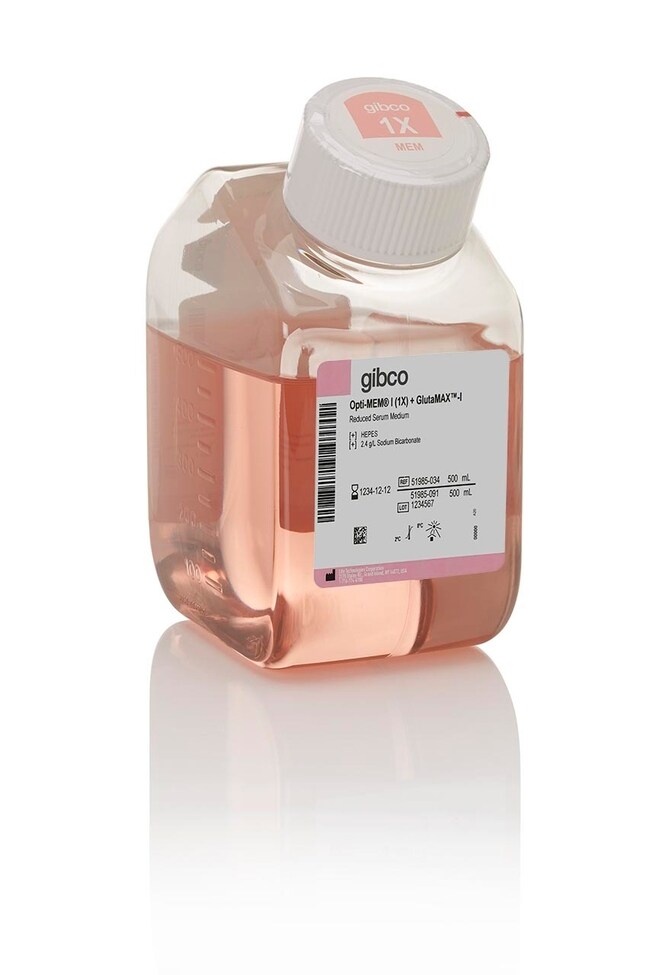Search Thermo Fisher Scientific

Opti-MEM™ I Reduced Serum Medium, GlutaMAX™ Supplement
 Sonderaktionen
Sonderaktionen| Katalognummer | Menge |
|---|---|
51985034 | 500 mL |
Opti-MEM™ I Reduced-Serum Medium is an improved Minimal Essential Medium (MEM) that allows for a reduction of Fetal Bovine Serum supplementation by at least 50% with no change in growth rate or morphology. Opti-MEM™ I medium is also recommended for use with cationic lipid transfection reagents, such as Lipofectamine™ reagent. Opti-MEM™ I medium can be used with a variety of suspension and adherent mammalian cells, including Sp2, AE-1, CHO, BHK-21, HEK, and primary fibroblasts. We offer a variety of Opti-MEM™ I modifications for a range of cell culture applications.
This Opti-MEM™ I is modified as follows:
| With |
| • GlutaMAX™ |
| • Phenol Red |
The complete formulation is confidential. For more information, please contact Technical Services.
Using Opti-MEM™ I Medium
Opti-MEM™ I Reduced-Serum Medium is a unique medium that contains insulin, transferrin, hypoxanthine, thymidine, and trace elements. These additional components allow for a reduction in serum supplementation by at least 50%. Opti-MEM™ I medium uses a sodium bicarbonate buffer system (2.4 g/L), and therefore requires a 5–10% CO2 environment to maintain physiological pH.
Versandbedingungen: Haltbarkeit bei
Raumtemperatur: 18 Monate ab Herstellungsdatum

Follow the 5 steps to publication-quality fixed-cell imaging.
Download your free 5-step guide today ›
